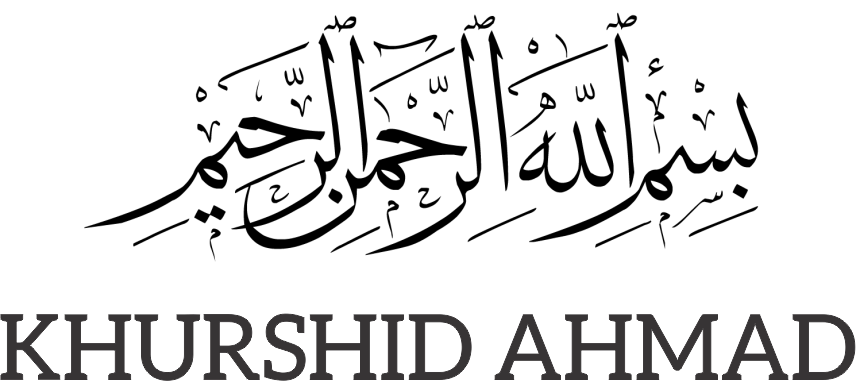Islamic Political Economy And Capitalist Globalization
Current Global Situation
- End of cold war and drift towards a unipolar world.
- The fall of Communism and the alleged vindication of “Political and
Economic Liberalism” as the ideology of the times.
- The failure of development strategies and consequent impoverishment of the Third World and its increasing dependence on the West.
- The Clash of Civilizations syndrome and projection of Islam as a threat.
- The marginalization of the world of Islam.
The Real Predicament of the Muslim Ummah
- Rich in resources human and material poor in leadership and resource
utilization
- Colonial socio-political institutions and structures: failure to move to a
post-colonial era. Both in ‘secular’ as well as ‘religious’ realms.
- Economic and technological gap.
- Imitative approaches and strategies: Crisis of identity and confusion about
goals.
- Moral crisis — dichotomy between Religion and Society; faith and politics.
The Islamic Response
- Distinction between Islam and the present day Muslim society and state.
- Status quo — Muslim but not Islamic!
- Islam — as an ideal — source — roots — destiny
- Islam as a critique of
- Present day Muslim society and Muslim history
- The challenge from the West
- Rediscovery of Islamic roots, identity and idealism
- Futuristic approach
- Ijtihadi approach
- Integrative approach
- Integration of moral and spiritual with the material and physical Islamization
means transformation of all realms of life and existence — arrall-embrassing
and integrative approach.
- Re-awakening of faith, purification and consolidation of moral and ethical aspects.
- Intellectual challenge and response — education/information.
- Change of society and institutions.
- Political will/power.
- Starting point — present day Muslim states — concern for co-existence,
cooperation, common goals and strategies, collective self-reliance without
opting for isolationism or autarky — Relationship with the West, with the Rest.
- Gradual and Evolutionary approach, systematic work to achieve revolutionary
results: peoples’ involvement, participation, and people to be the beneficiaries
of growth and development.
Critical Minimum — A (Approach and Goals)
- No Islamization without ‘Islam’
- Idealism/Motivation.
- Independences/Self-Reliance/Minimization of dependence/Security.
- Strength/Development/Power.
- Justice, Equity and Caring.
- Homogeneity/Integration within
- Technology/Efficiency
- Free and Responsible society — Rights and Duties — Incentives and
Sanctions — Freedom and Responsibility
- Family, civil society and State: Harmonious
Relationships.
- Private Property and Enterprise, Market-mechanism with moral filter, and
state supervision and judicious intervention
Critical Minimum — B (“Strategies and Priorities’)
- Moral awakening, revival of faith, development and dissemination of
information and education.
- Man-centred development strategy — development of human resources and
human environment.
- Agricultural/Industrial/Tertiary (Service) development from an indigenous
base.
- Production and consumption of useful goods and services:
- Haiti and Haram dimension
- Priorities in the light of Maqasid-e-Shariah
- Avoidance of waste and frivolities
- Distributive justice
- Regional/Sectional balance — Decentralized growth.
- Improvement in the Quality of life.
- Education and skill generation
- Employment creation
- System of social security and solidarity.
8. New technology, research and development.
9. Reduction of national dependency on the outside world and greater integration within the Muslim World:
— Food
— Defence
— Technology
Section VI
- Uniqueness of the Islamic Approach
- How different from
- Western Liberalism
- Socialism
- Green Socio-Economics.
